Tracing Its Evolution and Impact
The word “logo” is an abbreviation of “logotype”, which comes from the Greek λόγος meaning “word” and τύπος meaning “imprint”. A logo is a graphic symbol that represents a product, company or idea. But a logo is also an emblem of the era and environment in which people live.
The evolution of logo design can be traced right the way back to ancient Greece, when sovereigns and their dynasties would use monograms for their coins. Modern logo design, however, dates back to the Renaissance, around the 13th century. At the time, goldsmiths, paper makers and others would use gold stamps, engraved symbols, watermarks or simple ceramic fingerprints.
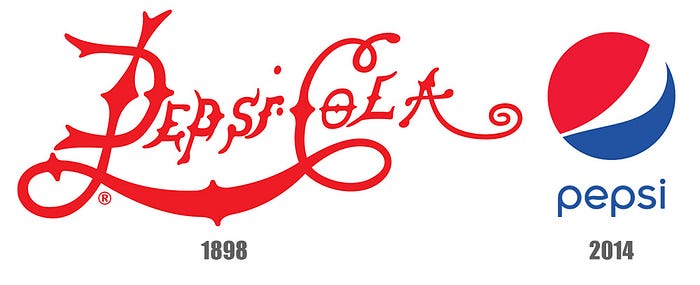
When you first glance at the Amazon logo, simplicity is evident. It’s a clean, memorable wordmark with a subtle arrow pointing from ‘a’ to ‘z’, symbolizing their vast range of products. Yet, beneath this apparent simplicity lies a rich history and purposeful design process. Much like the Indeed logo, Amazon’s emblem embodies more than meets the eye, reflecting the evolution of branding and logo design trends over time.
Similarly, the Pepsi logo presents a seemingly simple design — a red, white, and blue circular emblem with a wavy white stripe. However, like peeling back layers of an onion, delving into its history reveals a narrative of brand evolution and adaptation to cultural shifts. This evolution mirrors the broader trajectory of logo design trends, from elaborate embellishments to streamlined minimalism.
Just as superheroes’ logos serve as iconic symbols of their identities and values, so too do corporate logos like Microsoft’s. The Microsoft logo design exemplifies a shift towards simplicity and versatility, with its clean, colorful squares representing the company’s diverse range of products and services. This approach mirrors the timeless appeal of superhero logos, which communicate power and purpose with bold, recognizable imagery.
Reflecting on logo design trends throughout history, from the classic elegance of the Superman logo to the sleek modernity of the Ford logo, reveals a constant evolution towards clarity and simplicity. Much like these iconic emblems, the Indeed logo epitomizes this trend, distilling complex ideas into a clear, memorable symbol. Its understated elegance belies the careful thought and craftsmanship that went into its creation.
Logos are prominent features of modern companies, used on magazines, the internet, and smartphones. The first trademark was registered in 1875 for Bass Pale Ale, which became the world’s largest brewer. Over the past two centuries, graphic symbols have evolved from Art Nouveau and Liberty style to the popular flat design, expressing the past and present.
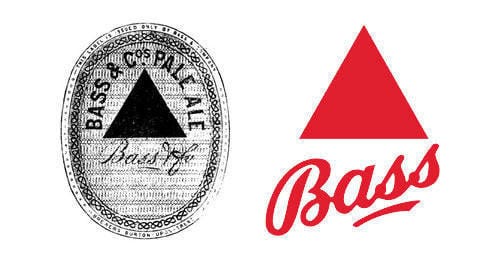
Ornamentation aplenty and complex logos
The Victorian era saw many artists drawn to what we today call graphic design. The logos of the period feature heavily seriffed and ornamented shapes and fonts. A perfect example is the first logo for Pepsi Cola, which dates to 1898 and was the creation of pharmacist Caleb Bradham. When we compare it to the latest Pepsi logo from 2014, we discover an enormous difference dictated by the era: today, there is a tendency to eliminate almost any type of complexity from these types of symbols to make them immediately recognisable.
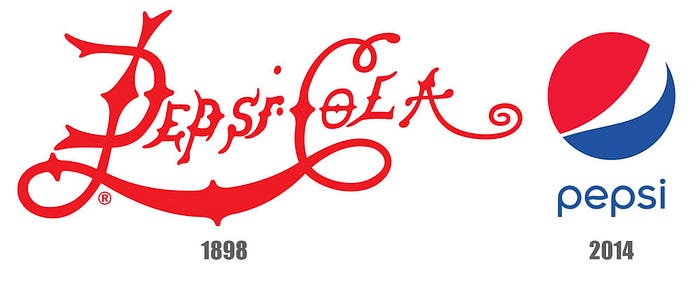
The international phenomenon has revolutionized logo design by incorporating intricate forms and illustrated initials, as seen in iconic brands like Jack Daniel’s and Ford.
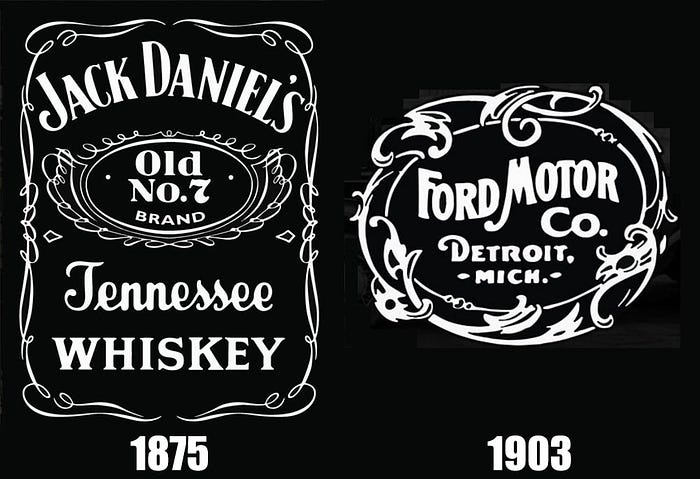
But the hand-written fonts of the Art Nouveau style made it a very popular graphic design philosophy. This inspired logo designers to use natural forms in the structure of these signs and symbols, as exemplified in the logos for Coca Cola and Mercedes, two logos from three different eras.
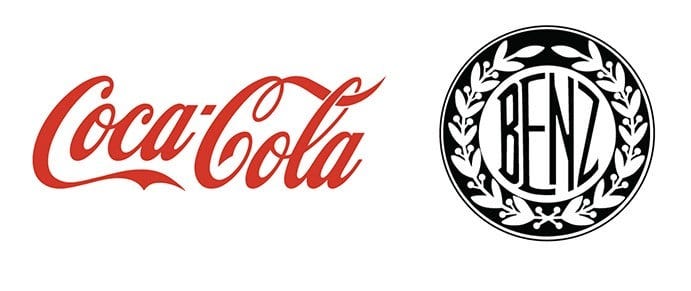
Simplification and rounded geometry
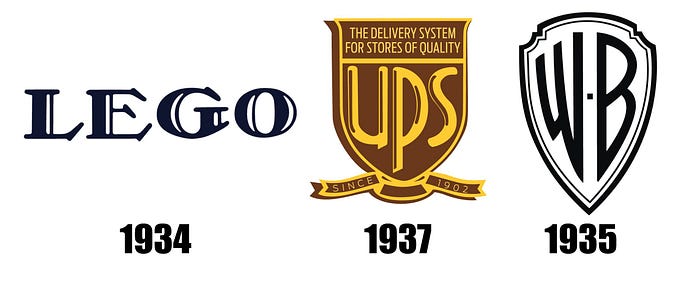
It was probably around the 1930s that companies began to realise the power of logos and, therefore, that they had to be legible and immediately recognisable. Seriffed fonts were adopted for logos like Kodak and Lego, while Coca-Cola and Pepsi simplified theirs somewhat. The Art Deco style combined tradition with mechanical and material elements, as well as rich colours and rounded geometry.
Standing in contrast to the serifs and flowers of Art Deco was German expressionism with its precise, squared lines and ordered vision of the world, as seen in the Volkswagen logo from 1938, a trademark par excellence. It’s a minimal approach that perhaps helps us understand the Germany of that era.

A notable exception was Canon, the camera and lens manufacturer. If you compare its first logo (a nod to an eastern divinity) to its current, the transformation is striking. Interestingly, the last time Canon introduced a new logo was 1956, so the logo shown on the right is the one used today.
The 1970s and 1980s usher in a new era of originality
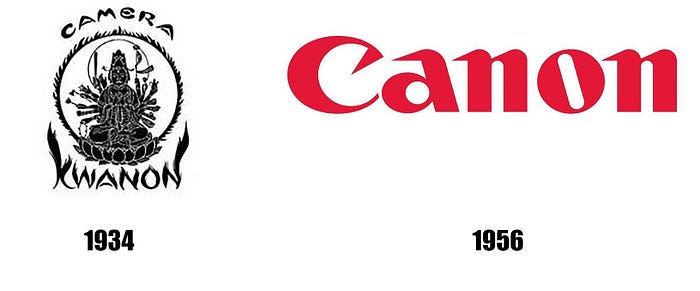
The design industry matured and learned something about itself during the 1970s. Some logos had managed to withstand the test of time by becoming simpler and clearer. As the years advanced, so did postmodernism with graphic designers revisiting symbolism and ornamentation in logos that had been abandoned previously. It also heralded the combining of unusual colours, like in the MTV logo.

The digital age and flat design
We’re not really talking about a historical movement here, because it’s continuing today. Logos designed for the digital world could adopt any style, but we’ve now become used to the flat design that’s now used by almost every firm that has to create a logo.
Logos used to look great on headed paper, which not all companies want or need today. As a result, the very concept of the logo has been simplified: most companies, regardless of their sector, have adopted simpler symbols, opting for something that is instantly recognisable on social media or small devices like smartphones. This minimalism eschews the use of design elements giving the illusion of three dimensions and instead opts for simple elements, letters and flat colours.
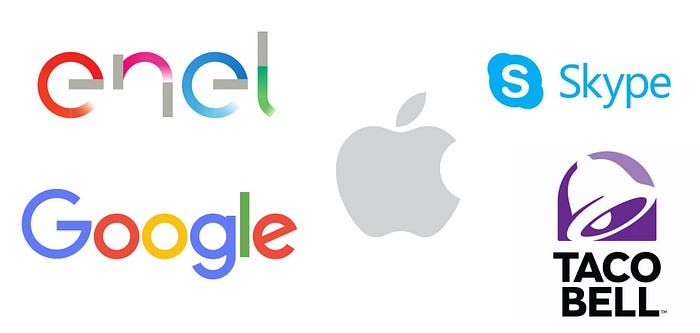
The path embarked upon 200 years ago is a long one. Open innovation and collaboration have certainly changed the dynamics of the graphic design industry and this is bound to affect the future of logos. What will happen after this hyper-simplification, sans serif fonts and minimalism? It may be that, to stand out, some brands will aim for greater complexity in their logos. Indeed, brands like Taco Bell and Italian utilities company Enel use gradients in their logos to set them apart from the flat design used by competitors.
In the future, we may have to think about how logos are viewed in virtual reality, even if the rules and recipes will always be the same: a logo must be immediately identifiable with the company and its values.
Conclusion
The evolution of logos, exemplified by Canon’s transformation, reflects a dynamic shift from tradition to innovation. The digital age has ushered in flat design and adaptability, prioritizing simplicity and recognizability across platforms. However, as brands embrace open innovation, future logos may diverge from minimalism towards greater complexity. Yet, the essence of effective logo design remains rooted in immediate identification with the company’s values, regardless of the medium.


No comments yet